Keeping your home in top shape feels like a never-ending battle, especially when you juggle work, family, and personal commitments. You might feel overwhelmed by the sheer volume of tasks, from cleaning to repairs, and wonder how anyone keeps up. The truth is, busy homeowners, renters, and apartment dwellers benefit immensely from a structured approach, not from trying to do everything at once. A strategic, month-by-month approach to home care, often called a home maintenance schedule, transforms daunting chores into manageable tasks.
This article provides a practical, actionable home maintenance calendar, designed to simplify your life and protect your investment. We break down crucial home care into a monthly checklist, focusing on preventive maintenance that saves you time, money, and stress in the long run. You will find realistic solutions that fit your budget and your busy lifestyle, ensuring your living space remains comfortable and functional year-round.
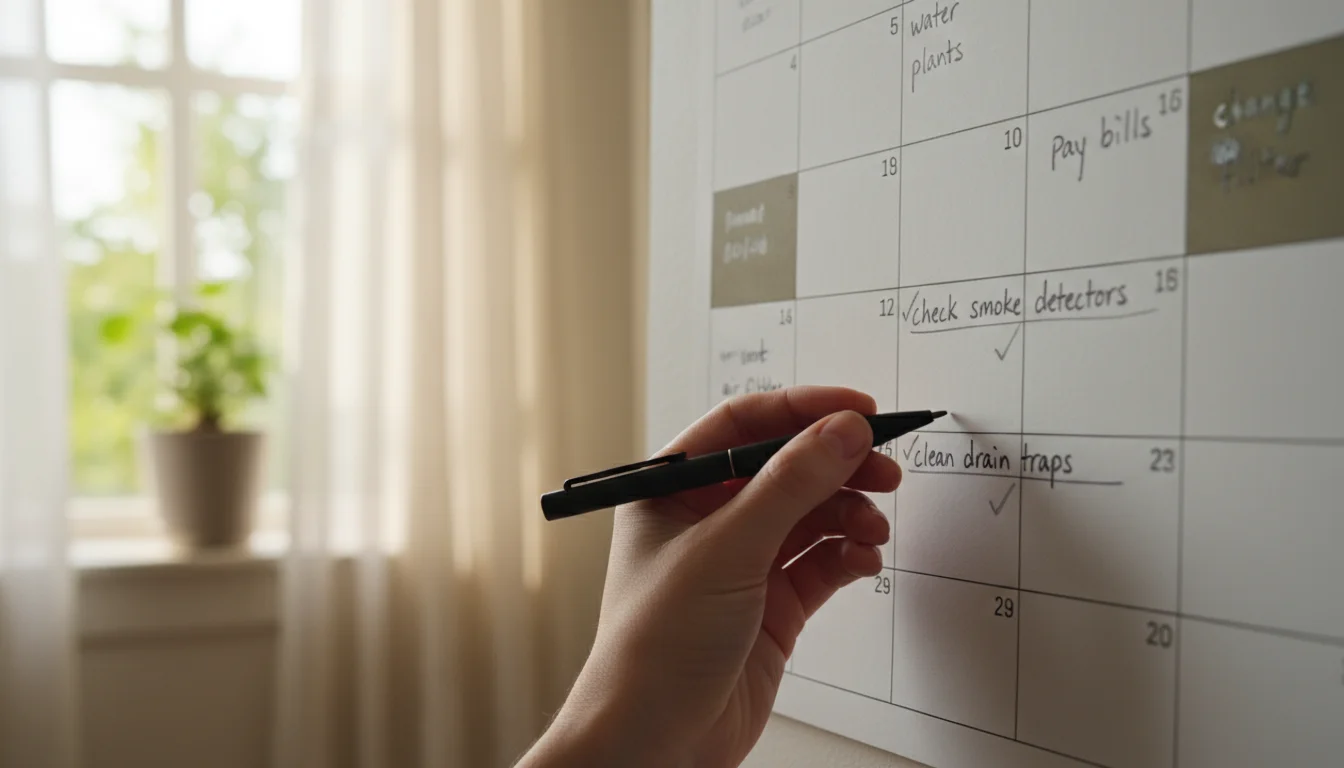
Why a Proactive Home Maintenance Schedule Matters
You probably think about home maintenance when something breaks, like a leaky faucet or a clogged drain. However, a reactive approach often leads to costly emergency repairs and significant inconvenience. Embracing a proactive home maintenance schedule offers numerous benefits, turning potential disasters into minor fixes and extending the lifespan of your home’s systems.
Think of your home as a complex machine. Just like your car needs regular oil changes and tire rotations, your home requires consistent attention to perform optimally. Preventive maintenance involves identifying and addressing small issues before they escalate. This strategy protects your investment, maintains your home’s value, and creates a healthier, safer living environment for you and your family.
A consistent monthly checklist helps you avoid unexpected expenses. For instance, cleaning your gutters regularly prevents water damage to your foundation and roof, a repair that could cost thousands. Changing HVAC filters keeps your system running efficiently, saving you money on energy bills and extending the life of the unit. According to Energy Star, simply changing your HVAC filter can improve efficiency by reducing strain on the system. This directly translates to lower utility costs.
Beyond financial savings, a well-maintained home is a more comfortable home. Better indoor air quality, consistent temperatures, and functional appliances contribute to your overall well-being. Knowing you have a plan in place also reduces stress and gives you peace of mind. You gain control over your home’s needs rather than letting them control you.

Crafting Your Personalized Monthly Checklist
Creating a personalized monthly checklist does not require a complete overhaul of your routine. Start by understanding your home’s specific needs and your own availability. Every home is unique, whether you live in a sprawling house, a cozy apartment, or a rental property. Your personalized schedule should reflect these differences and your available time and budget.

Step 1: Assess Your Home and Its Systems
- Identify key areas: Walk through your home, room by room, and consider outdoor spaces. List all major appliances, HVAC systems, plumbing fixtures, windows, doors, and exterior components like siding, roof, and gutters.
- Consider age and condition: Older homes or appliances may require more frequent attention. Note any existing issues you want to monitor.
- Review manufacturer guidelines: For major appliances and HVAC systems, consult the owner’s manuals for recommended maintenance frequencies.
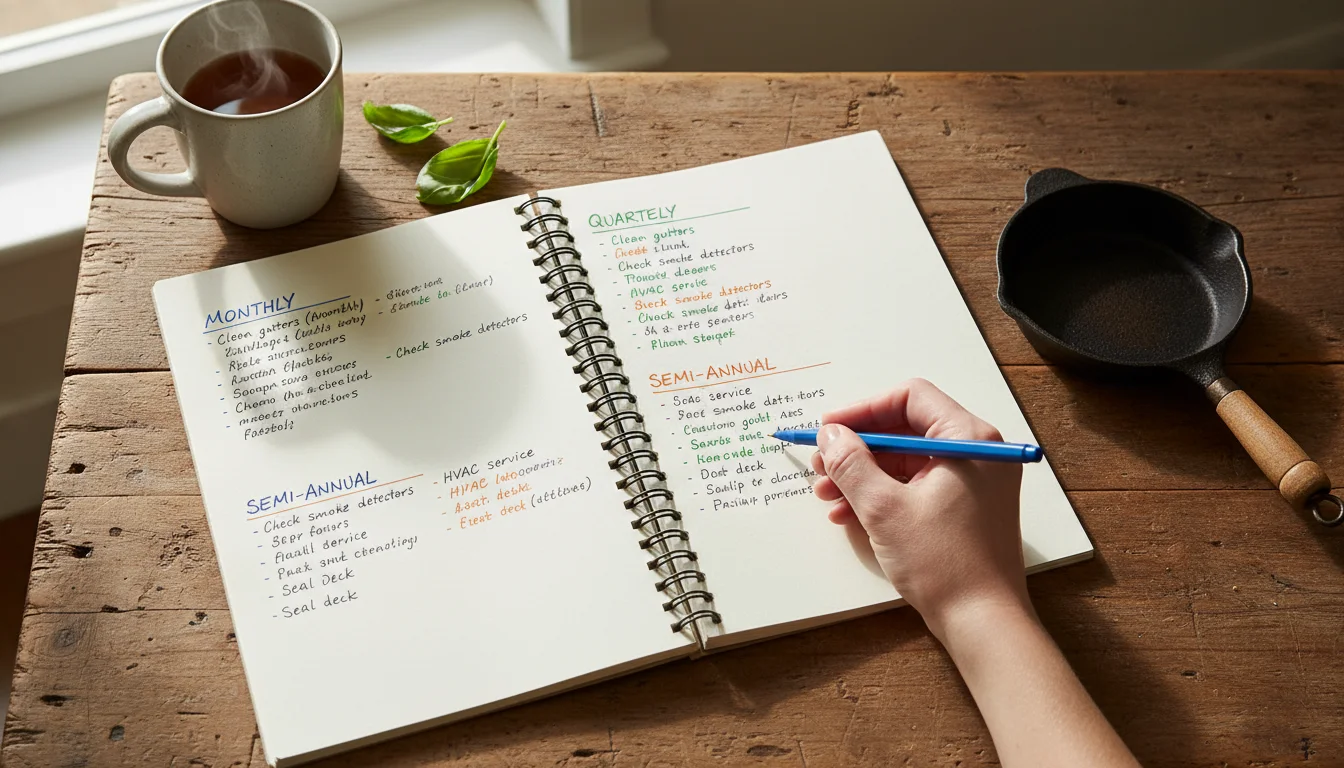
Step 2: Prioritize and Categorize Tasks
Break down tasks into categories: monthly, quarterly, semi-annual, and annual. This article focuses on monthly tasks, but integrating them into a broader view is helpful.
- Safety and health: Tasks related to smoke detectors, carbon monoxide detectors, and indoor air quality always take precedence.
- Preventive measures: These tasks protect against major failures, like checking for leaks or cleaning drains.
- Comfort and efficiency: These include tasks like changing filters or sealing drafts to improve living conditions and lower utility bills.

Step 3: Integrate into Your Lifestyle
Realistically, you might not accomplish every task exactly on the first day of the month. That is perfectly fine. The goal is consistency, not perfection. Assign tasks to specific weeks or even days that make sense for your schedule. Perhaps you dedicate a few hours on the first Saturday of each month to maintenance, or you spread tasks throughout the month, tackling one small item each weekend. You can even combine tasks with existing routines. For example, check your refrigerator’s seals when you wipe down the interior.
Remember, this is your calendar. If a task feels too overwhelming, break it down further. For instance, instead of “clean all windows,” schedule “clean living room windows” one month and “clean bedroom windows” the next. This flexible approach ensures your home maintenance schedule remains a helpful tool, not another source of stress.

Winter Wonders: January, February, March Home Maintenance
The winter months often keep us indoors, making it an ideal time to focus on interior maintenance, energy efficiency, and preparing for the thaw.
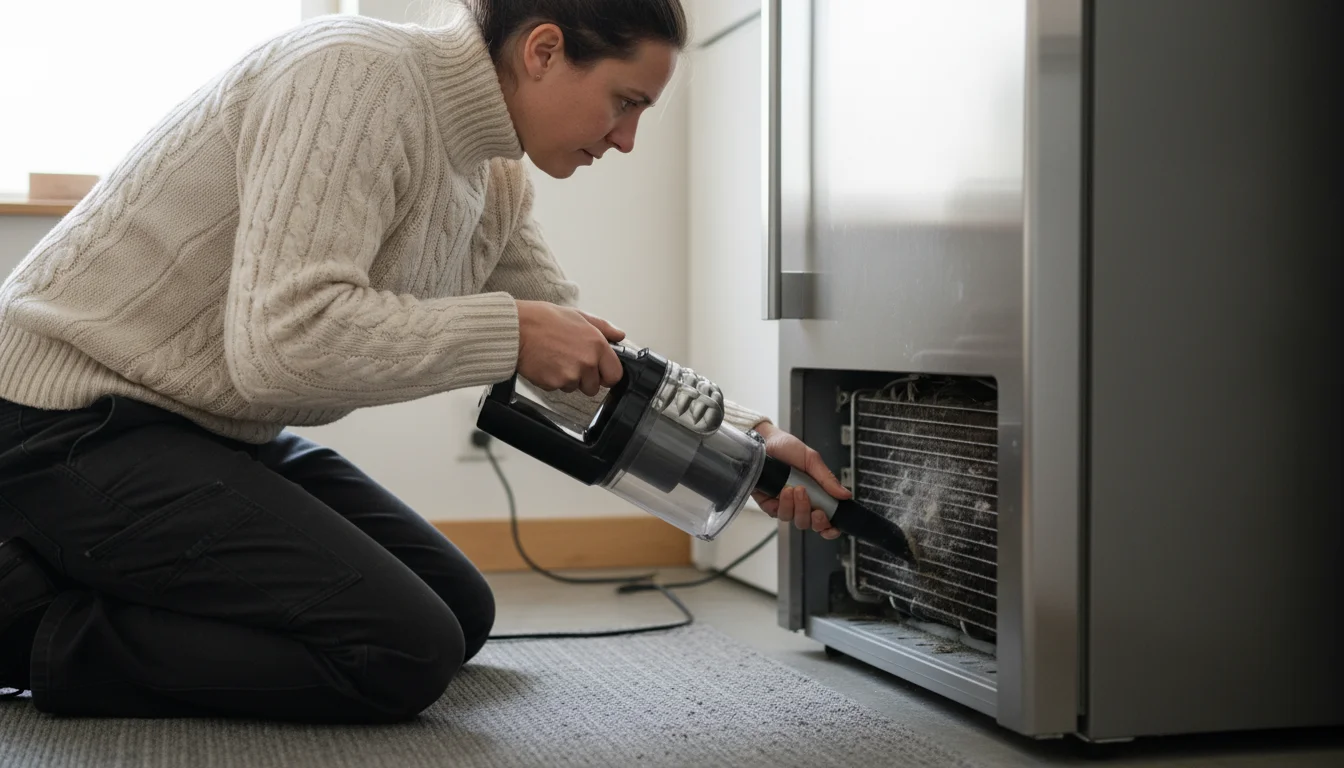
January: Fresh Start, Warm Home
- Check and clean HVAC filters: A clean filter is crucial for efficient heating and good indoor air quality. Replace disposable filters or clean reusable ones. Experts at the EPA emphasize that poor indoor air quality contributes to various health issues, making filter changes a critical task.
- Inspect smoke and carbon monoxide detectors: Test all units, replace batteries as needed. You want these working properly, especially when heating systems are in heavy use.
- Clean refrigerator coils: Pull out your fridge, vacuum the coils. This improves efficiency and extends the life of your appliance.
- Deep clean kitchen appliances: Wipe down the oven, microwave, and dishwasher. This prevents grease buildup and keeps them running smoothly.
- Check for drafts: Feel around windows and doors for cold air leaks. Seal small gaps with caulk or weatherstripping if temperatures allow, or use temporary draft stoppers.

February: Mid-Winter Check-In
- Inspect plumbing for leaks: Check under sinks, around toilets, and near appliances for any signs of drips or moisture. Catching small leaks early prevents bigger water damage.
- Clean garbage disposal: Grind ice cubes with a cup of white vinegar or citrus peels to clean and deodorize.
- Wipe down baseboards and interior doors: Dust and grime accumulate quickly. A quick wipe keeps surfaces looking fresh.
- Review emergency kit: Check flashlight batteries, replenish first aid supplies, and ensure non-perishable food items are not expired.
- Test GFCI outlets: Press the “test” button, then the “reset” button to ensure they are working in bathrooms, kitchens, and other wet areas.
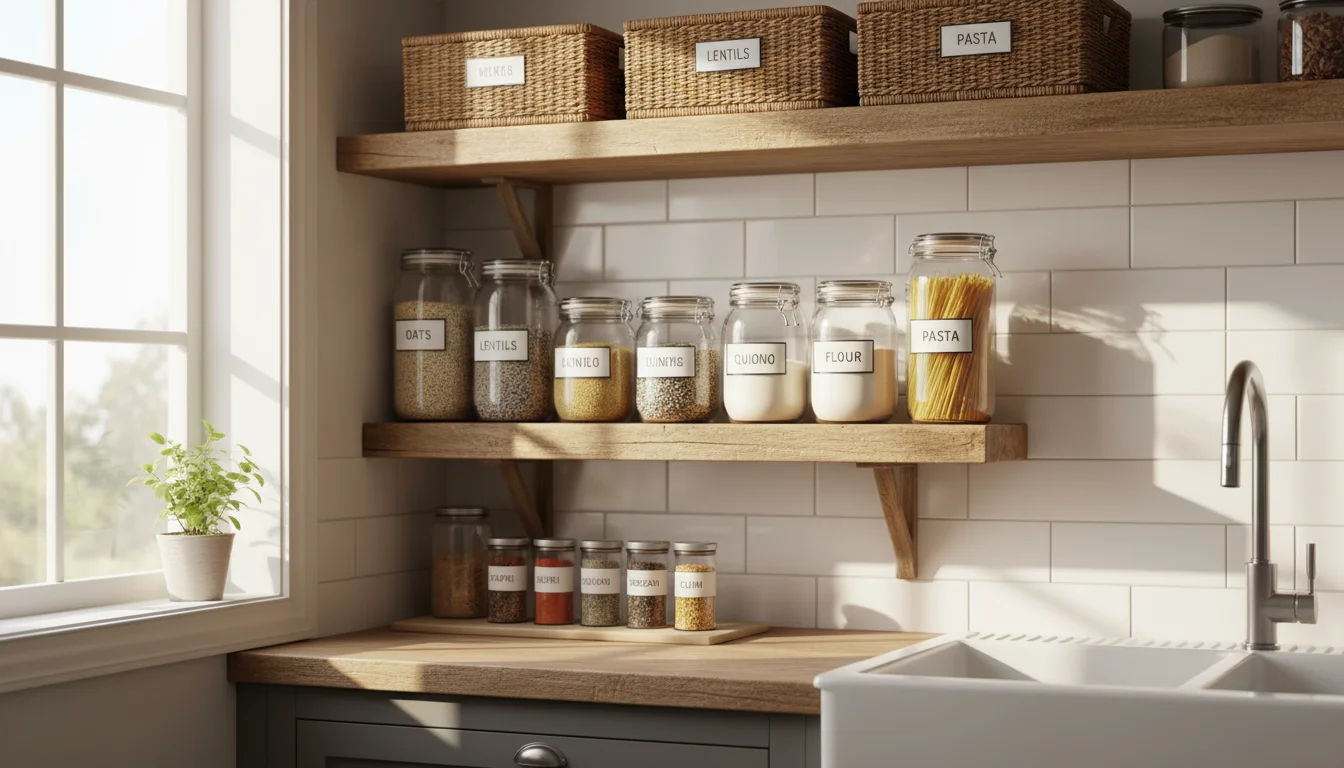
March: Preparing for Spring
- Clean light fixtures and ceiling fans: Dust collects on light covers and fan blades, reducing light output and circulating allergens.
- Check dryer vent: Ensure the exterior dryer vent flap opens and closes properly. Clean any visible lint buildup around the opening.
- Organize and declutter one small area: Focus on a pantry shelf, a drawer, or a bathroom cabinet. This sets a positive tone for spring cleaning without feeling overwhelming.
- Clean blinds and curtains: Vacuum or wash blinds and curtains to remove accumulated dust from the winter months.
- Inspect roof from the ground (if safe): Look for any damaged or missing shingles that might need attention before spring rains.

Spring Forward: April, May, June Essential Tasks
As the weather warms, your focus shifts to refreshing your home after winter and preparing for the busy outdoor season. These tasks ensure your home is ready for warmer temperatures and increased activity.
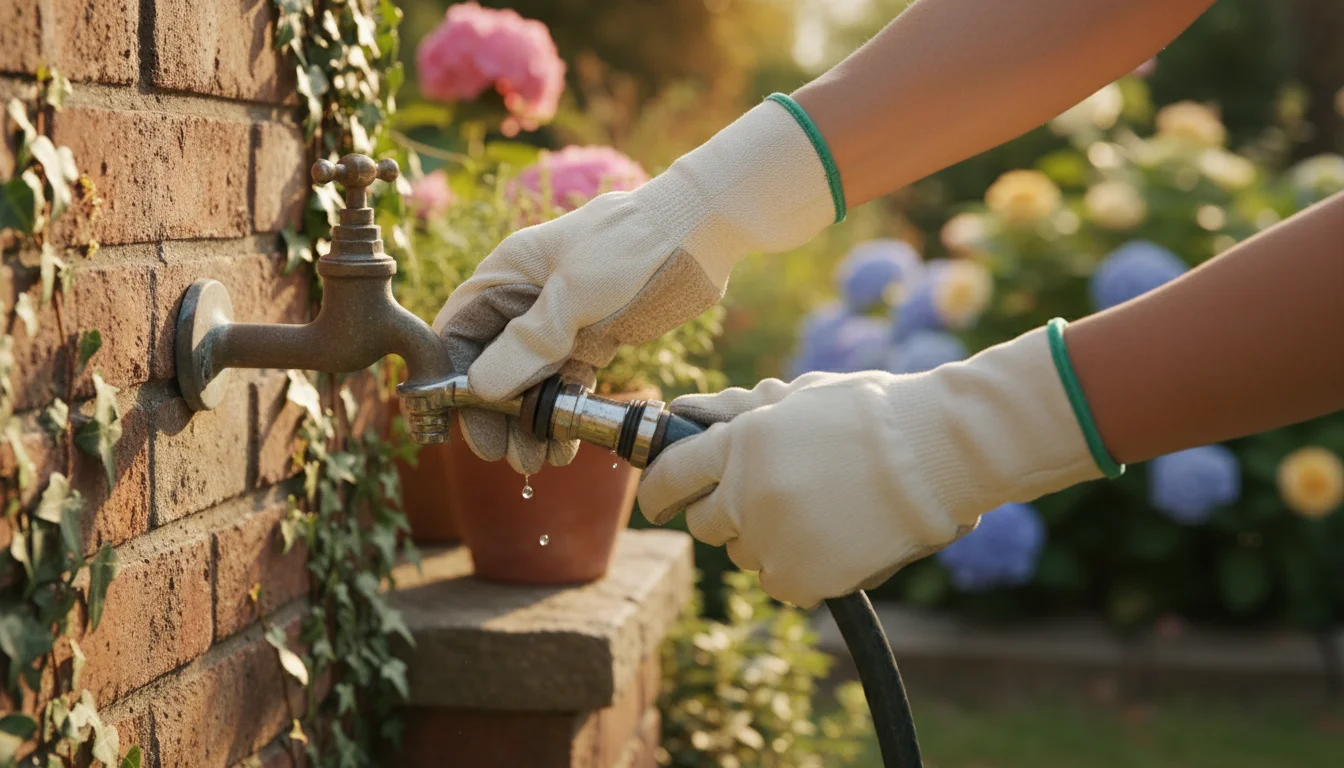
April: Spring Cleaning Kick-Off
- Clean windows, inside and out: Remove winter grime and enjoy clearer views. Use a squeegee for streak-free results.
- Inspect and clean gutters and downspouts: Remove leaves and debris to prevent water overflow and foundation damage. This is a crucial `preventive maintenance` step.
- Check outdoor faucets and sprinkler systems: Turn on outdoor water and look for leaks or damage. Prepare your irrigation system for summer use.
- Service HVAC system: Schedule a professional tune-up for your air conditioning unit before summer heat arrives. This ensures efficient cooling and prevents breakdowns.
- Clean out dryer vents completely: Disconnect the hose and clean accumulated lint from both the hose and the dryer’s interior vent opening. This reduces fire risk and improves efficiency. As noted by Family Handyman, dryer vent cleaning is a critical, often overlooked safety task.
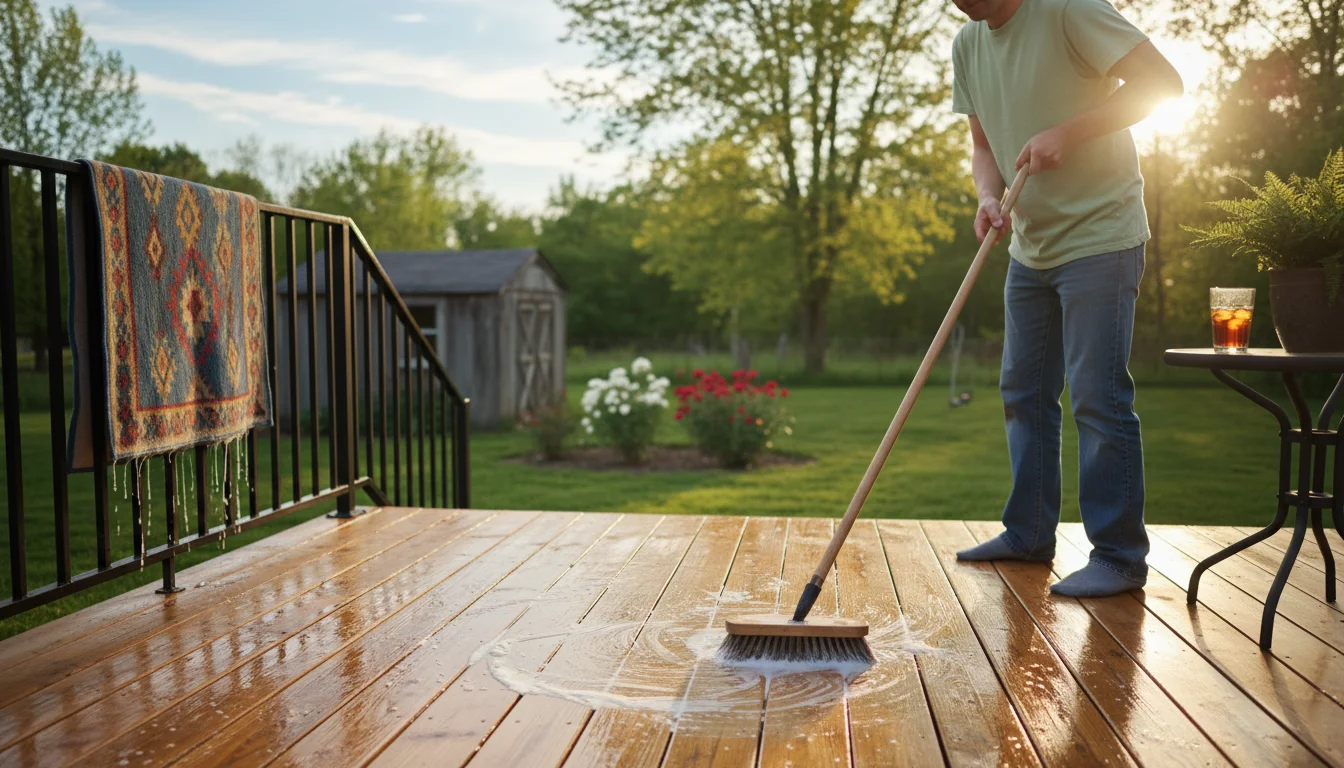
May: Outdoor Prep and Deep Clean
- Clean and inspect deck or patio: Sweep, wash, and check for any loose boards or repairs needed. Apply sealant if necessary.
- Deep clean carpets and rugs: Rent a carpet cleaner or hire a professional to remove accumulated dirt and allergens. For area rugs, follow care instructions for washing or shaking out.
- Inspect foundation: Look for cracks or signs of water intrusion around your home’s perimeter. Address minor issues promptly.
- Check and repair window screens: Patch small holes or replace torn screens to keep bugs out.
- Service lawn mower and garden tools: Sharpen blades, change oil, and ensure all equipment is ready for prime gardening season.
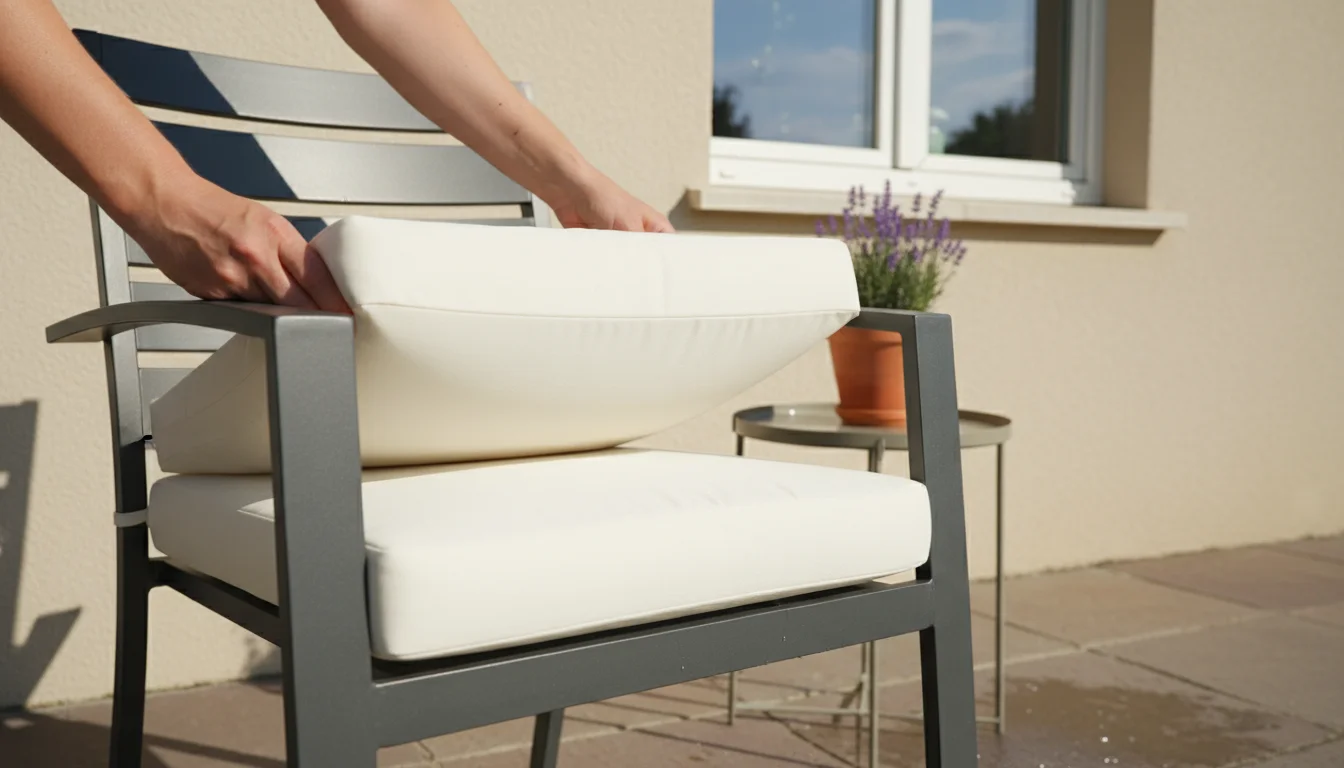
June: Summer Readiness
- Clean and organize garage/storage areas: Declutter, sweep, and organize tools and outdoor equipment. Maximize your storage space for summer gear.
- Wash exterior siding and windows: Use a pressure washer or a hose with a scrub brush for a clean exterior.
- Check exterior caulking and sealants: Inspect around windows, doors, and utility penetrations. Reapply caulk where it has cracked or peeled to prevent moisture intrusion.
- Clean outdoor furniture: Wipe down or wash cushions and frames to prepare for outdoor entertaining.
- Inspect fences and gates: Look for loose posts, broken slats, or rust. Make any necessary repairs to ensure security and appearance.
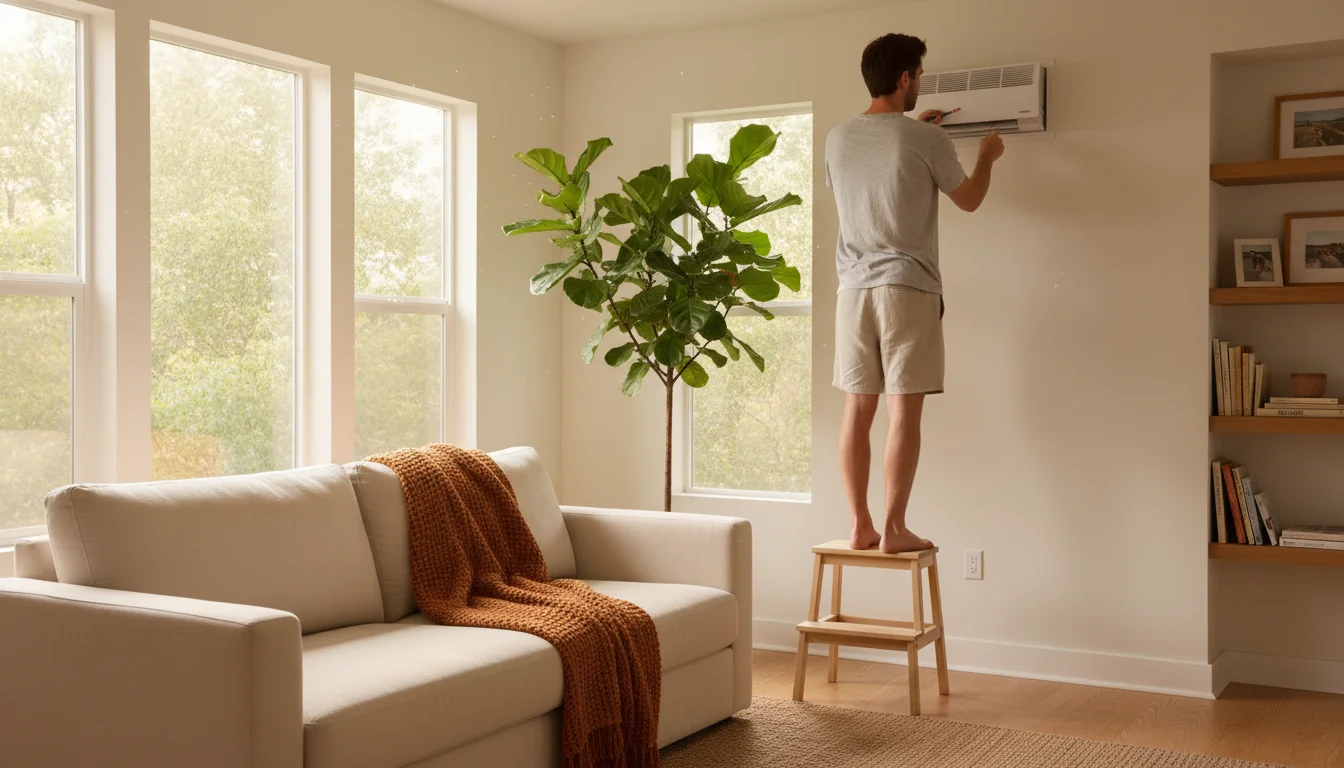
Summer Stability: July, August, September Home Care
Summer brings long days and often intense heat. Your home maintenance schedule during these months focuses on keeping things cool, efficient, and ready for the impending cooler weather.
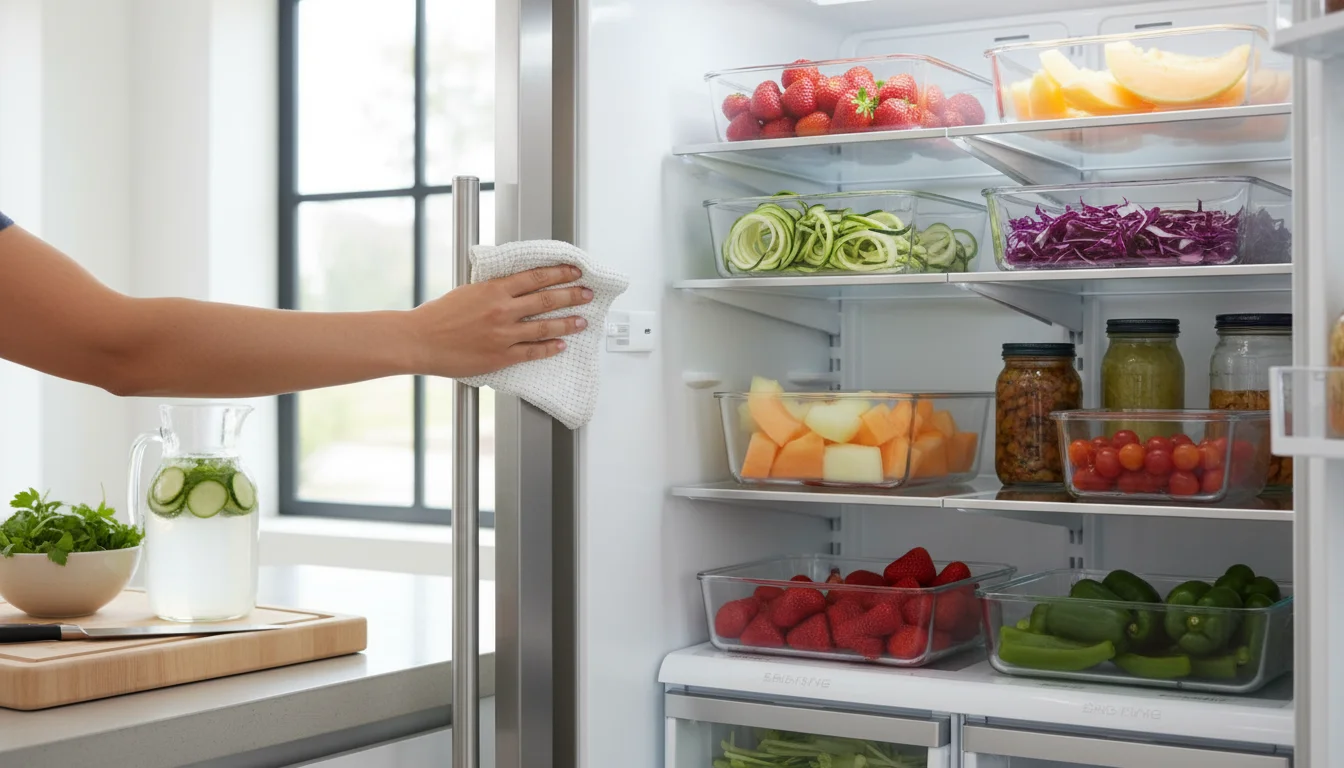
July: Cooling System Focus
- Clean refrigerator and freezer interior: Empty, wipe down, and organize. Check and clean the door seals for proper closure.
- Inspect water heater: Check for leaks and corrosion. If you have a tank heater, consider flushing it according to manufacturer instructions to remove sediment, improving efficiency and lifespan.
- Clean kitchen and bathroom exhaust fans: Remove covers and clean fan blades to ensure proper ventilation. This helps manage humidity and odors.
- Inspect outdoor lighting: Check light fixtures for functionality and clean any bug accumulation. Replace bulbs as needed.
- Test sump pump: Pour a bucket of water into the pit to ensure the pump activates and drains properly. This is vital for homes with basements or crawl spaces, especially during heavy rains.

August: Preparing for Fall
- Check and clean dryer vent: Perform another check and cleaning of your dryer vent, both inside and out, especially if you do a lot of laundry.
- Inspect attic and crawl spaces (if accessible and safe): Look for signs of pests, water leaks, or insulation issues. Ensure proper ventilation.
- Clean dishwasher filter: Many modern dishwashers have a removable filter that requires regular cleaning to prevent odors and improve washing performance.
- Trim trees and shrubs: Cut back branches that are too close to your home, roof, or power lines. This prevents damage during storms and deters pests.
- Check for pest control issues: Look for signs of insects or rodents, especially around entry points. Seal any small cracks or holes you find.

September: Early Autumn Readiness
- Inspect roof and chimney: From the ground, look for loose shingles, damaged flashing, or chimney issues before colder weather sets in. Consider a professional inspection if you see concerns.
- Clean outdoor drains and storm sewers: Clear any leaves or debris to ensure proper drainage before fall rains.
- Test fire extinguishers: Check pressure gauges and ensure they are easily accessible and not expired.
- Clean all waste bins: Wash out kitchen and bathroom trash cans, and outdoor garbage bins, to prevent odors and pest attraction.
- Service garage door: Lubricate moving parts and check the auto-reverse safety feature. Ensure it opens and closes smoothly.

Autumn Awareness: October, November, December Preparations
The final quarter of the year focuses on winterizing your home, preparing for holidays, and ensuring your systems are ready to handle cold temperatures and increased indoor activity.

October: Winterizing Your Home
- Flush hot water heater: Drain a few gallons from the bottom of your water heater to remove sediment, which improves efficiency and extends its life. This is a critical `preventive maintenance` task.
- Turn off and drain outdoor water systems: Disconnect hoses, turn off exterior water valves, and drain sprinkler systems to prevent pipes from freezing and bursting.
- Inspect and clean gutters and downspouts: This is a crucial repeat task after most leaves have fallen. Blocked gutters lead to ice dams and water damage.
- Check and clean fireplace/chimney: If you use your fireplace, schedule a professional inspection and cleaning. Ensure the flue damper closes tightly.
- Reverse ceiling fans: Switch fan direction to clockwise on a low speed to push warm air down from the ceiling, improving heat distribution.

November: Holiday and Cold Weather Prep
- Clean all carpets and area rugs: A final deep clean before heavy indoor traffic during the holidays.
- Inspect weatherstripping and caulk: Re-examine windows and doors for drafts. Add or repair weatherstripping and caulk to seal gaps and improve energy efficiency.
- Clean refrigerator and freezer: A good time to clear out old items and wipe down surfaces before holiday food storage.
- Check electrical outlets and cords: Look for frayed cords or overloaded outlets, especially with increased holiday lighting. Address any fire hazards.
- Prepare guest areas: Clean and declutter guest bedrooms and bathrooms. Wash linens and ensure supplies are stocked.

December: End of Year Review
- Inspect and test smoke and carbon monoxide detectors: A final check before the new year.
- Change HVAC filters: Ensure your heating system runs efficiently and your indoor air quality remains good throughout the coldest months.
- Clean and sanitize all garbage cans: A quick wash keeps your home fresh during holiday gatherings.
- Check for signs of pests: Ensure rodents or insects have not found their way into your warm home during the cold. Seal any new entry points.
- Review your maintenance calendar for the upcoming year: Note any tasks you missed or want to adjust for the new year. This reflective step ensures your `home maintenance schedule` remains effective.
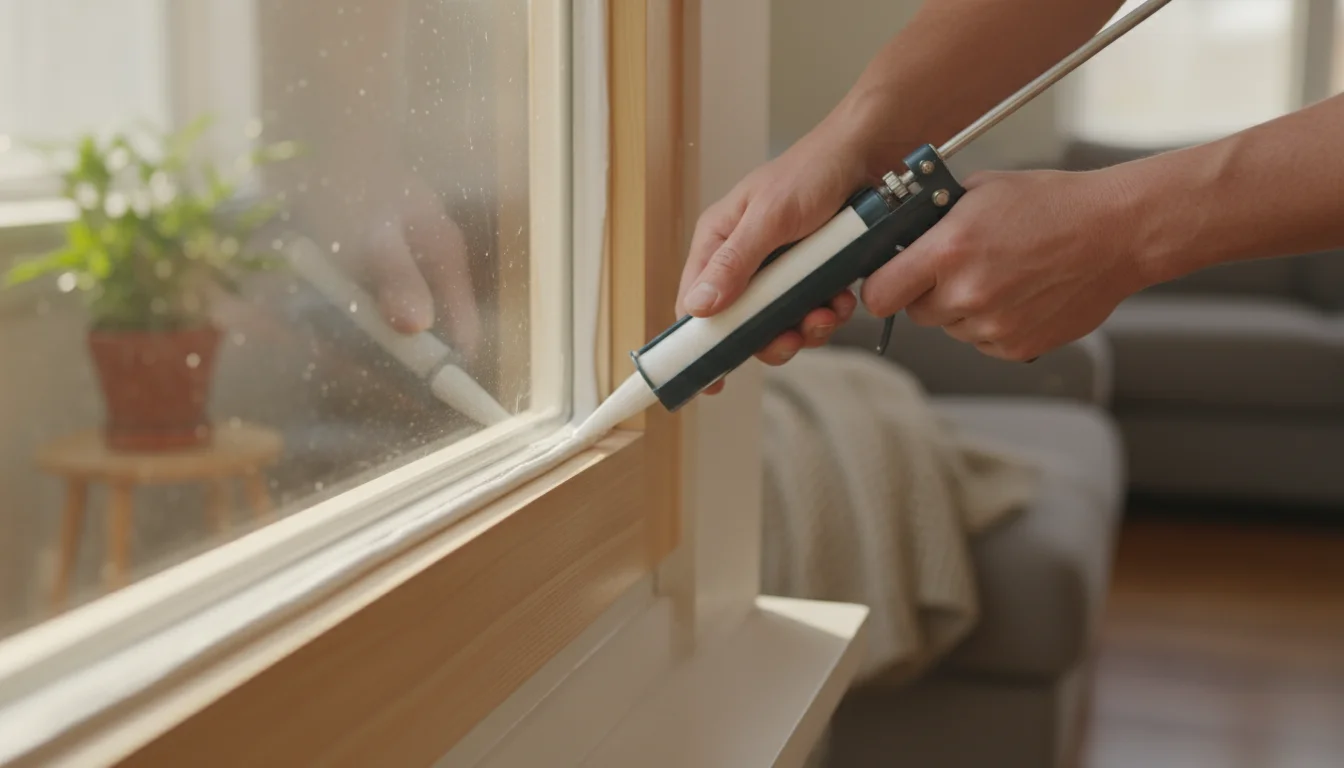
Tackling Common Maintenance Challenges on a Budget
Maintaining a home often comes with perceived costs, but smart budget-conscious strategies ensure you do not break the bank. Many essential tasks are DIY-friendly, requiring minimal tools or investment.
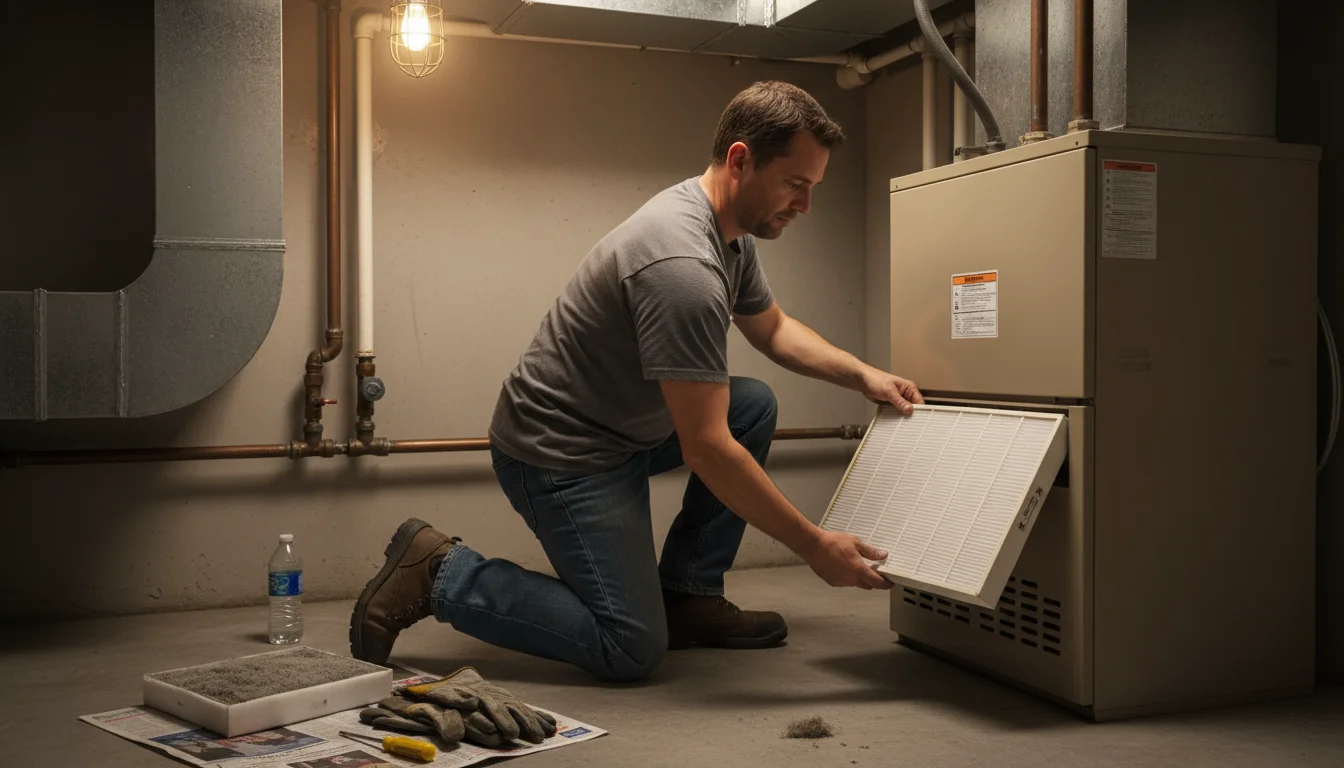
DIY First Approach
Many tasks on your monthly checklist, such as changing HVAC filters, cleaning gutters, or checking for leaks, require basic tools and a bit of elbow grease. Opt for DIY whenever possible to save on labor costs. Online resources, like those from Bob Vila or This Old House, offer step-by-step guides for almost any home maintenance task you can imagine.

Smart Shopping for Supplies
- Buy in bulk: Purchase common supplies like cleaning solutions, air filters, and light bulbs in larger quantities when they are on sale.
- Generic brands: Often, store-brand cleaning products and basic tools perform just as well as their name-brand counterparts at a fraction of the cost.
- Multi-purpose cleaners: Instead of specialty cleaners for every surface, choose versatile options like white vinegar, baking soda, and dish soap. These are effective, inexpensive, and eco-friendly.

Prioritize and Plan for Larger Expenses
Some maintenance tasks, like HVAC servicing or professional chimney cleaning, genuinely require experts. Incorporate these into your annual budget. By doing smaller, `preventive maintenance` tasks yourself, you reduce the frequency of professional interventions and allocate your budget to the most critical services. Create a dedicated “home maintenance” savings fund, setting aside a small amount each month, so you are prepared for inevitable larger repairs or professional services when they arise.
For example, instead of buying expensive specialized cleaning solutions for every surface, consider making your own. A simple mix of white vinegar, water, and a few drops of essential oil cleans glass, countertops, and even acts as a floor cleaner. This reduces chemical exposure and saves money. Similarly, for small repairs, a basic toolkit with a hammer, screwdrivers, pliers, and a tape measure will tackle most minor household fixes without the need to call a handyman.
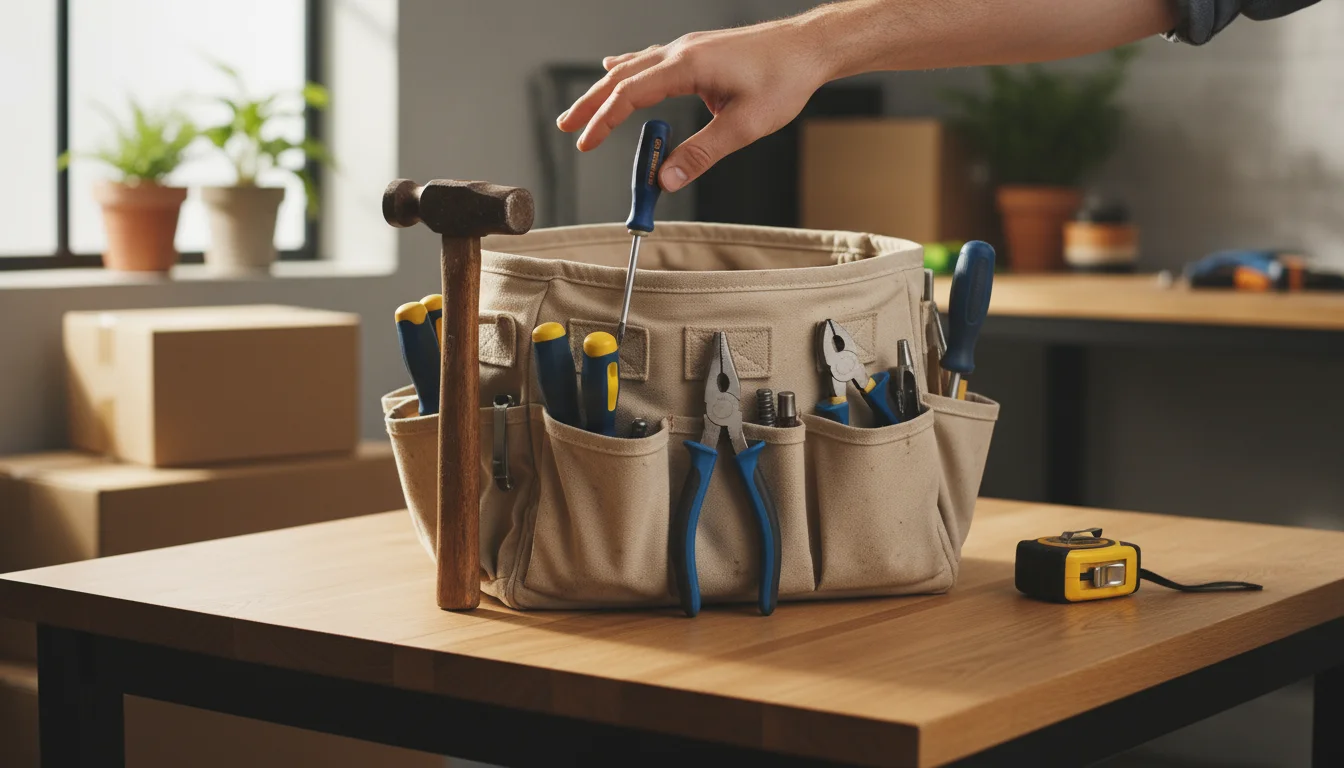
Essential Tools and Supplies for Your Maintenance Kit
Having the right tools makes home maintenance easier and more efficient. You do not need a workshop full of expensive equipment. A well-stocked basic kit covers most routine tasks.

General Tools
- Basic Hand Tool Kit: This includes screwdrivers (Phillips and flathead), a hammer, pliers, an adjustable wrench, and a tape measure. You will use these for everything from tightening loose screws to assembling furniture.
- Utility Knife: Essential for opening packages, cutting caulk, and various small tasks.
- Ladder or Step Stool: Safely reach high shelves, change light bulbs, or inspect gutters. Choose one appropriate for your home’s height.
- Flashlight or Headlamp: Crucial for inspecting dark areas like under sinks, in crawl spaces, or during power outages.
- Gloves: Protect your hands from dirt, chemicals, and sharp objects.
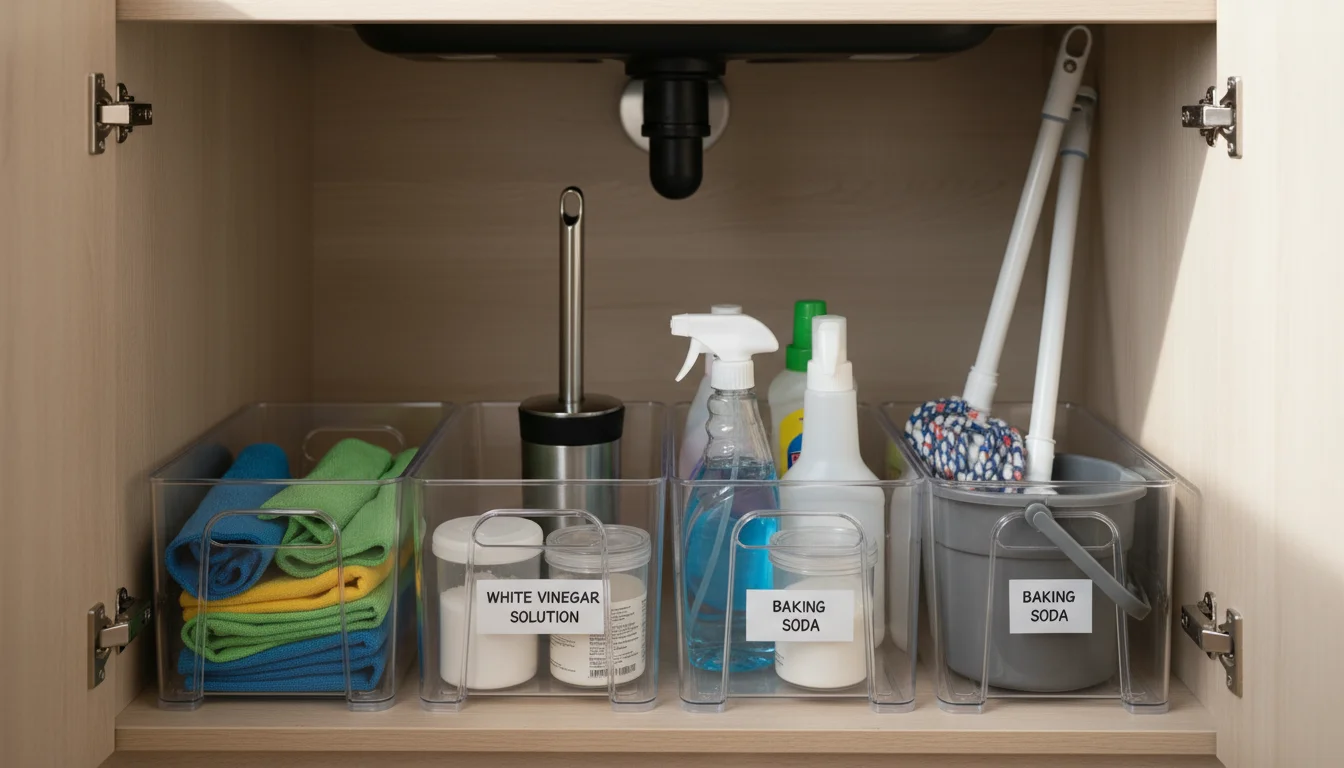
Cleaning Supplies
- All-Purpose Cleaner: A versatile spray for countertops, sinks, and general surface cleaning.
- White Vinegar and Baking Soda: Inexpensive, non-toxic powerhouses for cleaning, deodorizing, and unclogging drains.
- Microfiber Cloths: Excellent for streak-free cleaning and dusting.
- Vacuum Cleaner: With attachments for floors, upholstery, and crevices.
- Bucket and Mop: For floor cleaning.
- Toilet Brush and Cleaner: Essential for bathroom hygiene.

Maintenance-Specific Items
- HVAC Filters: Keep a supply of the correct size filters on hand.
- Caulk Gun and Caulk: For sealing cracks and gaps around windows, doors, and plumbing.
- Weatherstripping: To seal drafts around doors and windows.
- Plunger: An absolute necessity for clearing minor clogs in sinks and toilets.
- Lubricating Oil (e.g., WD-40): For squeaky hinges, sticky locks, and lubricating moving parts.
- Duct Tape and Electrical Tape: For temporary fixes and minor repairs.
You can find many of these items at your local hardware store or online retailers. Consider starting with a pre-assembled basic tool kit if you are just beginning. You can gradually add specialized items as your needs arise. Organizations like Good Housekeeping — Organization often publish lists of recommended basic tools and supplies for homeowners, helping you make informed, budget-friendly choices.

Frequently Asked Questions
Can I really do all this maintenance myself, even if I am not handy?
Absolutely. Many tasks on the monthly checklist are surprisingly simple and require no special skills. Changing an HVAC filter, testing smoke detectors, or checking for leaks are straightforward tasks that anyone can learn. Start with the easiest tasks to build your confidence. For more complex jobs, like extensive plumbing repairs or electrical work, always consult a professional. The goal is `preventive maintenance`, catching small issues early, which often requires basic observation rather than advanced skills.
What if I live in an apartment or rental? Which tasks still apply to me?
Many tasks on this home maintenance schedule are still relevant for renters. You are responsible for keeping your living space clean and identifying issues that your landlord should address. Focus on interior cleaning, checking smoke/CO detectors, cleaning refrigerator coils, inspecting for leaks, and reporting any concerns promptly. While you might not clean gutters, you certainly benefit from keeping your kitchen and bathroom drains clear. You play a vital role in maintaining the comfort and condition of your rental, and this `monthly checklist` empowers you to do that effectively.
How do I remember to do all these tasks?
The key to consistent home maintenance is integrating it into your routine. Consider setting monthly reminders on your phone or using a printable calendar. You can also dedicate one specific weekend each month to maintenance tasks. Break down larger tasks into smaller, more manageable steps throughout the month. For instance, rather than “clean entire bathroom,” aim for “clean toilet and shower this weekend,” then “clean sink and floor next weekend.” Consistency, not cramming, makes the `home maintenance schedule` effective.
How long should I expect to spend on monthly maintenance?
The time commitment varies based on your home’s size, age, and your preferred level of detail. Generally, expect to spend anywhere from 2 to 4 hours spread throughout the month on your `monthly checklist`. Some months might require a bit more for seasonal tasks, while others might be quicker. The beauty of `preventive maintenance` is that it saves you much more time and money than dealing with unexpected emergencies that a neglected home often incurs. Breaking tasks into smaller chunks also makes it feel less like a large chore and more like a series of quick, helpful actions.
For expert home organization guidance, visit
Martha Stewart — Home, Houzz — Home, The Spruce — Home Organization, Real Simple — Organizing and Good Housekeeping — Organization.
Disclaimer: This article is for informational purposes only and is not a substitute for professional advice. Consult professional organizers or specialists for personalized recommendations.








Leave a Reply